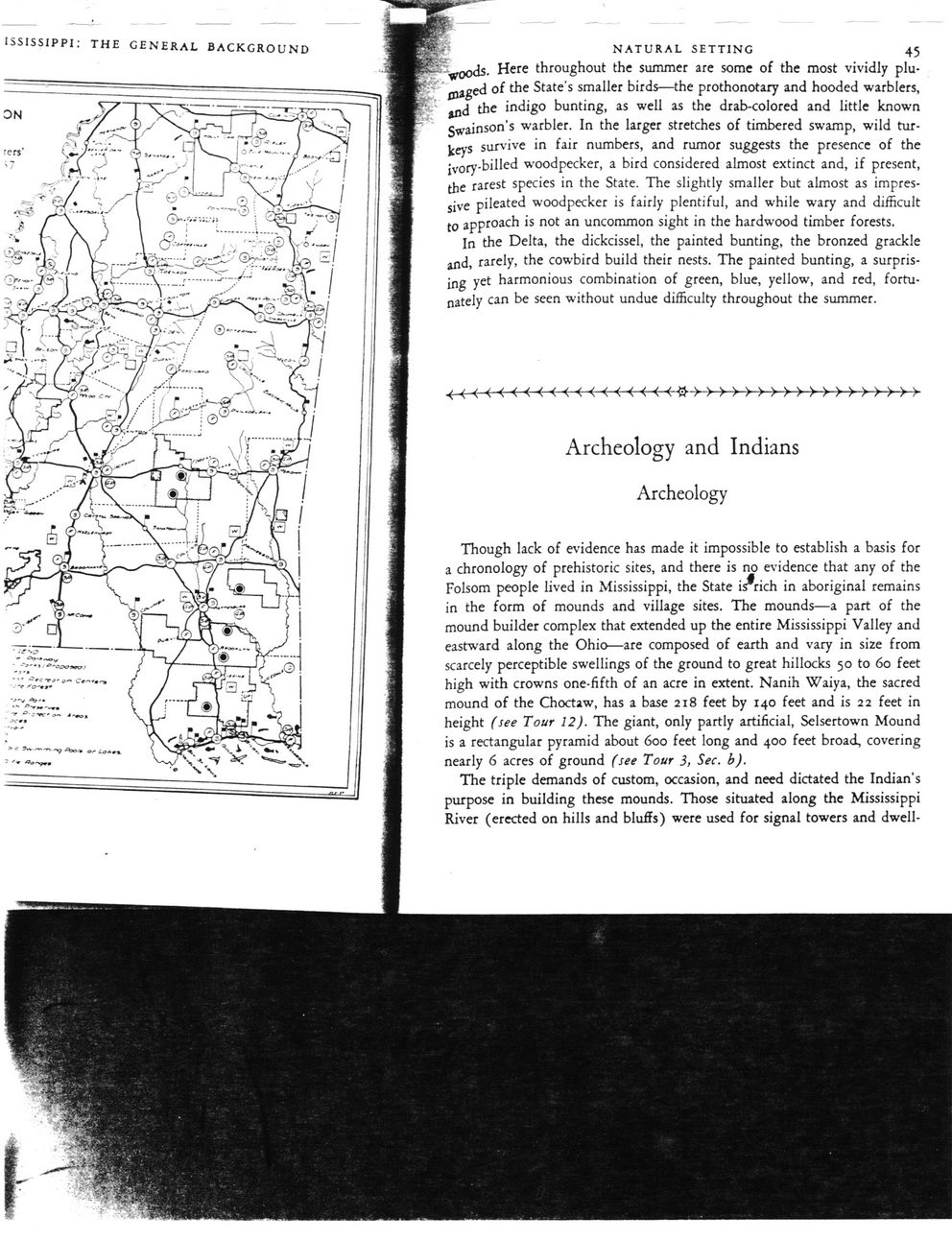This text was obtained via automated optical character recognition.
It has not been edited and may therefore contain several errors.
NATURAL SETTING 45 • ■vrtjcxls- Here throughout the summer are some of the most vividly plugged of the State’s smaller birds—the prothonotary and hooded warblers, the indigo bunting, as well as the drab-colored and little known Swainson’s warbler. In the larger stretches of timbered swamp, wild turkeys survive in fair numbers, and rumor suggests the presence of the ivory-billed woodpecker, a bird considered almost extinct and, if present, the rarest species in the State. The slightly smaller but almost as impressive pileated woodpecker is fairly plentiful, and while wary and difficult to approac^ is not an uncommon sight in the hardwood timber forests. In the Delta, the dickcissel, the painted bunting, the bronzed grackle and, rarely, the cowbird build their nests. The painted bunting, a surprising yet harmonious combination of green, blue, yellow, and red, fortunately can be seen without undue difficulty throughout the summer. ++< <<<<<<<<<<<<<<<■&->>>>>> y->~y-y-y y >>>>>> Archeology and Indians Archeology Though lack of evidence has made it impossible to establish a basis for a chronology of prehistoric sites, and there is no evidence that any of the Folsom people lived in Mississippi, the State is^rich in aboriginal remains in the form of mounds and village sites. The mounds—a part of the mound builder complex that extended up the entire Mississippi Valley and eastward along the Ohio—are composed of earth and vary in size from scarcely perceptible swellings of the ground to great hillocks 50 to 60 feet high with crowns one-fifth of an acre in extent. Nanih Waiya, the sacred mound of the Choctaw, has a base 218 feet by 140 feet and is 22 feet in height (see Tour 12). The giant, only partly artificial, Selsertown Mound is a rectangular pyramid about 600 feet long and 400 feet broad, covering nearly 6 acres of ground (see Tour 3, Sec. b). The triple demands of custom, occasion, and need dictated the Indian’s purpose in building these mounds. Those situated along the Mississippi River (erected on hills and bluffs) were used for signal towers and dwell-

Hancock County Early WPA-Guide-to-Mississippi-(036)